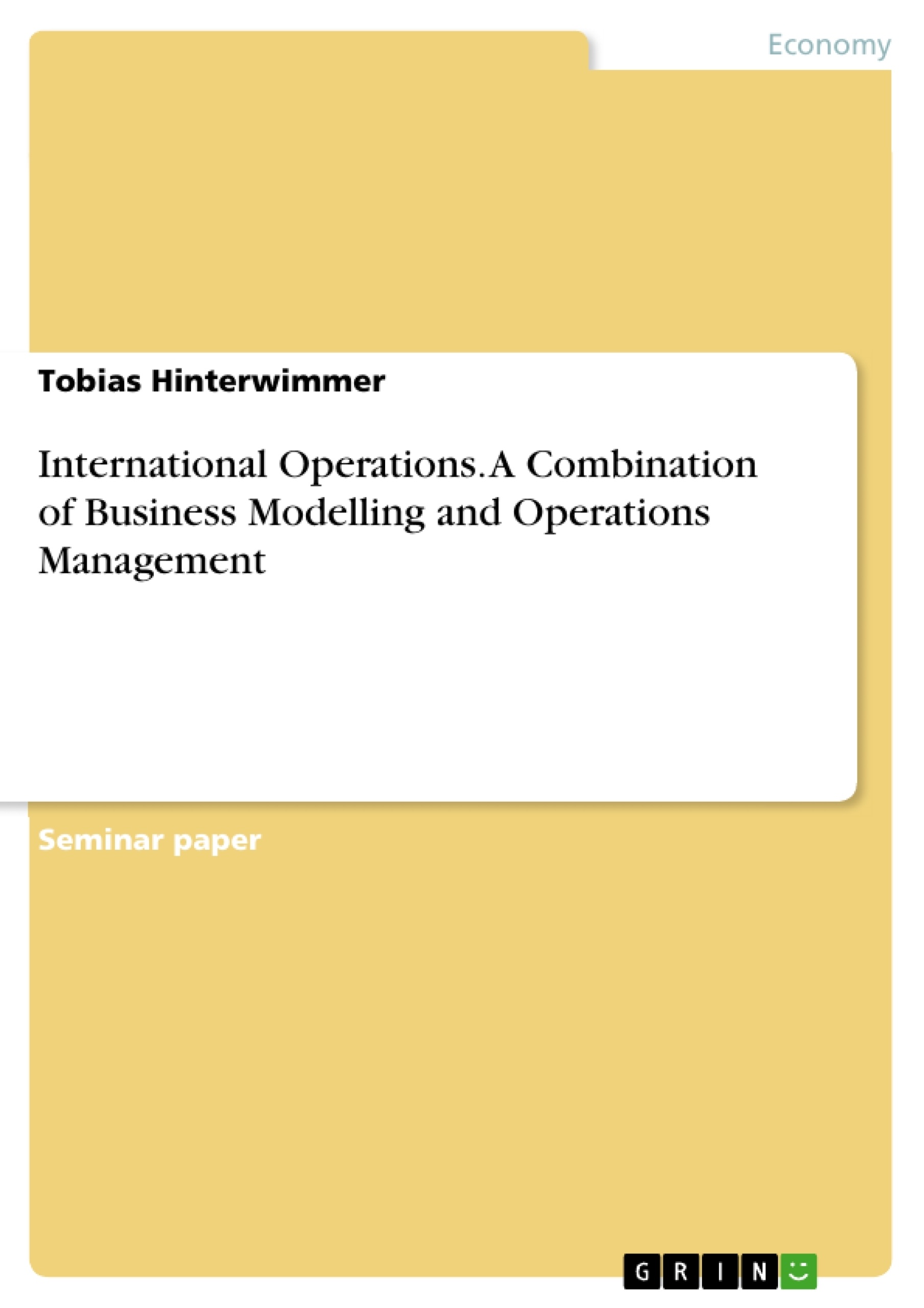The following term paper provides a theoretical, as well as practical approach to assess Alpha’s complexities occurring in the supply chain. Therefore, in the first part theoretical models are used to solve issues concerning sourcing and supply chain management. Later in the term paper the theoretical adjustments and improvements are combined with a linear programming approach, to create a more practical approach.
Alpha is an internationally operating company and so is their supply chain. The firm contains of two manufacturing locations, one in Germany and one in India. The German plant mainly manufactures products for Europe, the Middle East and Africa (EMEA). Simultaneously, Alpha’s Indian production location serves the Asian market. In order to get a tighter connection to their customers and achieve higher margins, Alpha recently dismissed all their intermediate dealers. This strategical adjustment provides them with the opportunity to bring their company closer to the customer and to achieve a deeper insight about their behaviors and needs, by simultaneously accomplishing some financial benefits.
Inhaltsverzeichnis (Table of Contents)
- Introduction
- Operations Functions and Global Supply Chain of the Lightning GBU
- Overall Assessment and Improvement Recommendations of the Operations Functions
- Supply Chain
- Planning Process
- Sourcing
- Production
- Storing
- Delivery
- Global Supply Chain Mapping and Types
- Global Sourcing Strategy for “Emergency Luminaire – injection moulded parts”
- Lean Manufacturing Principles
- Shipment Improvements
- Air freight
- Container freight
- Business Modelling
- Transportation Problem and LP Problem
- Production Problem and LP Problem
- Revenues and Profit
- Additional Questions
- Excess Capacity
- Rubber Shortage
- Dependency on Iron Sheets
- Dependence between the demand in Dubai and the production in India
- Integer Number of Products
- Sensitivity Report for Transportation Problem
- Conclusion
Zielsetzung und Themenschwerpunkte (Objectives and Key Themes)
This term paper aims to analyze the complexities of Alpha’s supply chain, focusing on sourcing and supply chain management. It utilizes theoretical models and a linear programming approach to identify and address issues, offering practical solutions for improvement.
- Assessing and improving the operations functions of Alpha’s Lightning GBU.
- Developing a global sourcing strategy for “Injection Moulded Parts”, a key material group.
- Implementing lean manufacturing principles, particularly “Just-in-time” manufacturing, to enhance efficiency and address operational challenges.
- Analyzing and improving shipment processes by exploring air freight and container freight options.
- Creating a business model using linear programming to optimize transportation and production decisions.
Zusammenfassung der Kapitel (Chapter Summaries)
- Introduction: Provides a general overview of the paper’s scope and approach, highlighting the use of both theoretical and practical methods to assess Alpha’s supply chain challenges.
- Operations Functions and Global Supply Chain of the Lightning GBU: Examines the various departments within Alpha’s supply chain and evaluates their performance, identifying areas for improvement. This chapter covers topics such as supply chain structure, planning process, sourcing strategy, production processes, storing practices, and delivery performance. It also introduces the different types of supply chains and how Alpha’s supply chain can be categorized.
- Global Sourcing Strategy for “Emergency Luminaire – Injection Moulded Parts”: Focuses on developing a strategic sourcing approach for “Injection Moulded Parts”, the largest material group for the “Emergency Luminaire”. It includes a detailed analysis of internal requirements, the supply market, stakeholders, and a SWOT analysis. The chapter concludes by outlining specific sourcing strategies and relevant KPIs for monitoring and reporting purposes.
- Lean Manufacturing Principles: Discusses the challenges of job shop manufacturing and the need for lean manufacturing principles to address issues like excessive lead times, unreliable delivery, and high costs. This chapter introduces the “Just-in-time” manufacturing approach, emphasizing its impact on inventory management, production scheduling, and overall performance. It also highlights the importance of aligning product design with manufacturing processes for optimal efficiency.
- Shipment Improvements: Examines the challenges of the Indian logistics sector and explores the benefits of collaborating with third-party logistics (3PL) providers like FedEx Fulfillment. It then outlines practical examples of improving shipment processes for both air freight and container freight, comparing their cost and duration to provide recommendations for optimized transportation.
- Business Modelling: Applies linear programming models to solve the transportation and production problems faced by Alpha. This chapter defines the decision variables, objective function, and constraints for each model. It then presents the optimal solution, which minimizes shipping costs and material sourcing costs, and calculates the overall revenue and profit for Alpha.
Schlüsselwörter (Keywords)
This paper explores the crucial aspects of supply chain management, encompassing operational functions, global sourcing strategies, lean manufacturing principles, shipment improvements, and business modeling. Key themes include value creation, cost optimization, efficient production processes, strategic sourcing, and third-party logistics collaborations. The paper utilizes linear programming to optimize transportation and production decisions and provides a comprehensive analysis of Alpha’s supply chain with practical recommendations for improvement.
- Quote paper
- Tobias Hinterwimmer (Author), 2018, International Operations. A Combination of Business Modelling and Operations Management, Munich, GRIN Verlag, https://www.grin.com/document/456655



